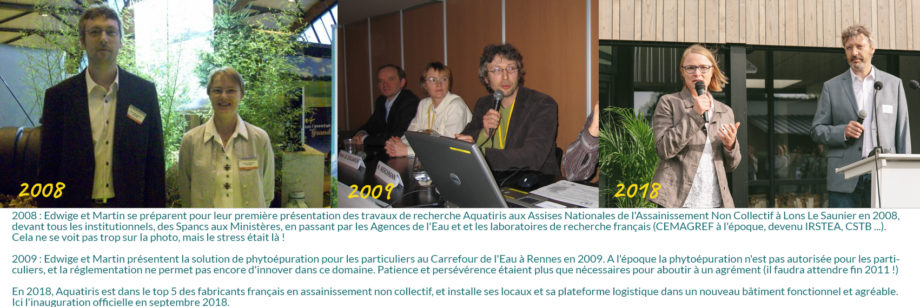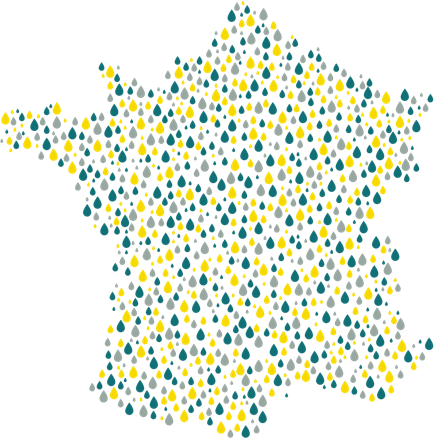Our story
Our network is constantly developing thanks to the added values of the men and women who join Aquatiris each year.
There is no chance, there are only appointments – Paul Eluard

Finding green solutions when it seems impossible is my daily driving force – Martin Werckmann
Before creating Aquatiris, I didn’t know I was going to do it, and I always did what I loved – Edwige Le Douarin
Martin WERCKMANN develops phyto-purification for small towns.
At the time, phyto-purification for individuals was not regulated. Only all-water pits were authorised, followed by spreading or sand filters (decree of 6 May 1996).
Meeting between Martin WERCKMANN and Edwige LE DOUARIN for a phyto-purification project for the Edwige house in Brittany. An experimental agreement was set up with the municipality of Québriac (35), the Community of Municipalities of Romantic Brittany government office and SPANC (Public Service for Non-Collective Wastewater Treatment).
On the strength of this experience, Edwige LE DOUARIN and Martin WERCKMANN plan to develop phyto-purification for individuals, still on an experimental basis, despite closed regulations. They start to network with a few partners.
More experiments are carried out in Brittany and also in other regions of France. Aquatiris is created to formalise and professionalise the phyto-purification network and know-how.
Aquatiris launches its first research programme, supported by the Brittany region, to monitor 50 installations on site for one year. The technique was proven on these operational installations.
The regulations evolve and authorise innovative channels for individuals by approval: launch of the Aquatiris channel test on an official platform.
Ministerial approval for Sanitation Garden – Iris Line. Sanitation Gardens are officially authorised for individuals.
A logistics subsidiary is created to supply the network of installers with Aquatiris-guaranteed materials.
Second ministerial approval for Sanitation Garden – Roseaux Line. Our industry is becoming more compact and improving its eco-record.
The Strasbourg establishment is created. Winner of the Idée Alsace Trophy for environmental technologies. Idée Alsace rewards the excellence of regional economic players, a real recognition for Aquatiris.
The CSR progress contract is launched.
Winner of the Climaxion circular economy call for projects.
The headquarters relocates to Bréal-sous-Montfort (35).
Aquaplus label: the Aquaplus label is dedicated to non-collective sanitation (NCS) professionals to distinguish companies that are committed to sustainable development while respecting quality, safety, the environment and social policy. Aquatiris obtained this label in 2018 with the best score!
Obtaining our Technical Opinion: recognition of the purification performance and traceability of our products, allowing us to be on the list of current insurance techniques.
IRSTEA (French research laboratory) study for the Ministries of Health and the Environment on process performance: Aquatiris obtains the best score and is recognised as the most efficient and reliable approved channel.
Winner of the Tango & Scan Trophy in the Grand-Est region: our phyto-purification on a floating platform, called Phytoinsel, is rewarded as an innovative and creative project. Construction scheduled for 2020.






